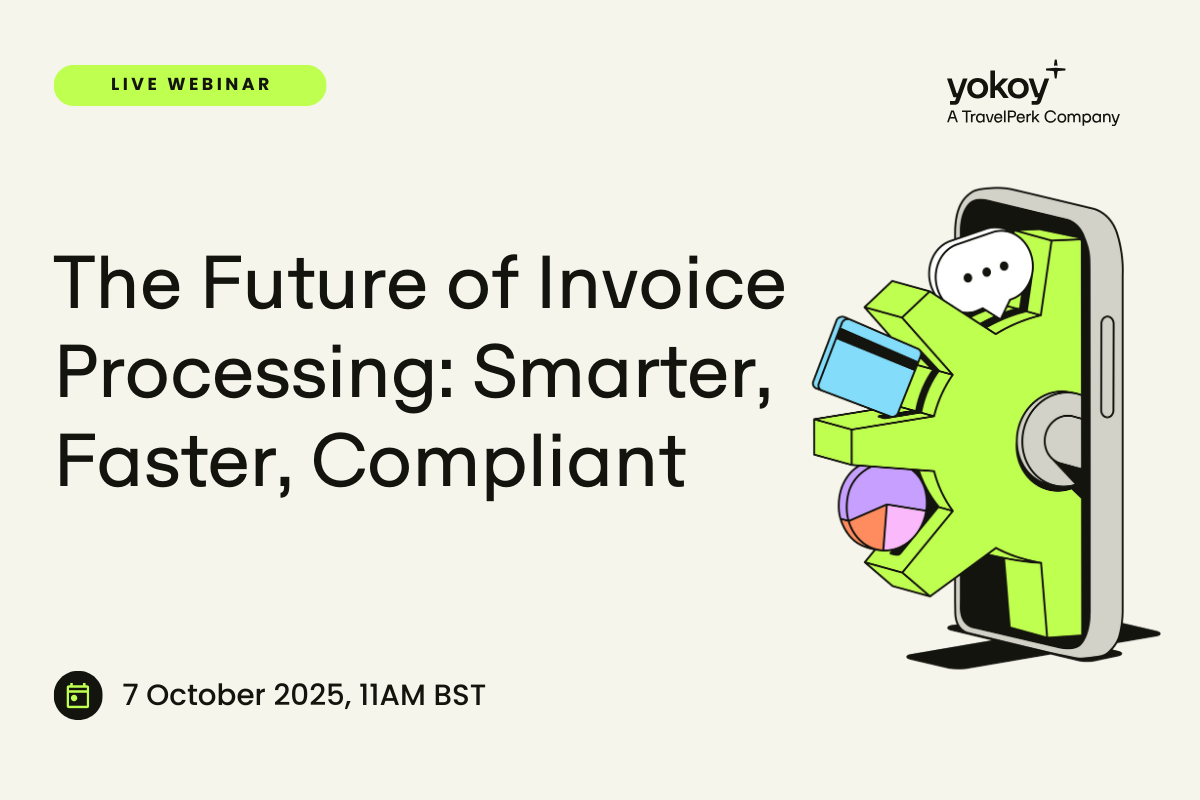
Finance professionals frequently face significant bottlenecks when trying to balance the benefits of automation tools with the need to maintain control over their financial data. You might have experienced this yourself: Inefficiencies in manual processes or slow Accounts Payable processes can hinder achieving optimal operational efficiency. Recognising the concerns about fully automating high-stakes tasks where precision is crucial, advanced automation systems are designed to offer the best of both worlds: They reduce manual workload and mitigate ineffective processes while providing the control needed to ensure accuracy and adaptability. With this, finance teams can harness the advantages of automation without sacrificing oversight or precision.
The endless possibilities of AP automation
Automation can be of great advantage in many fields of today’s business world — not only in Enterprise-Resource-Planning (ERP) Systems. Automation has become a game-changer for AP Teams, offering many possibilities to streamline operations, ensure optimised cash flow and enhance efficiency. With the integration of advanced automation tools and Artificial Intelligence (AI) into a business’ AP systems, you can transform old-fashioned, manual workflows and unlock new levels of accuracy, speed, and control. Modern AP automation software can build a bridge with AI’s sophisticated learning algorithms and real-time analytics to further elevate the capabilities of automation by enabling intelligent decision-making and continuous improvement. This synergy between accounts payable automation and AI addresses long-standing inefficiencies and paves the way for scaleable, innovative solutions.
Invoice and data capture: Automated AP workflows can streamline invoice management by using Optical Character Recognition (OCR) and other data extraction technologies. Even paper invoices can be automatically transferred into a company’s database. This eliminates the need for manual data entry, which is time-consuming and prone to errors. Key invoice data such as invoice numbers, dates, and amounts are automatically extracted, thereby speeding up the processing time and reducing administrative workload.
Identifying and correcting data issues: Advanced automation tools in AP processes can identify missing or incorrect invoice data. Once detected, the system can automatically fill in or correct erroneous information using predefined rules or data from integrated sources. This reduces processing costs and ensures the data remains accurate and complete while reducing the need for manual verification or correction.
Approval workflows: Designing customisable approval workflows that match a company’s specific policies can be an integral part of modern automation software. Routing invoices automatically through the necessary approval channels based on criteria such as amount, department, or type of expense is an important step in invoice management. Approval processes are streamlined, bottlenecks reduced, and payment processing flows much easier.
Making use of early payment discounts: Automation tools can identify invoices that qualify for early payment discounts and prioritise their processing. By flagging these invoices and ensuring they are paid on time, companies can take advantage of cost-saving opportunities that would otherwise be missed due to manual processing delays.
Avoiding late payments and duplicate payments: On the other hand, automated electronic invoicing can send reminders for upcoming payments and use duplicate detection algorithms to prevent the payment of the same invoice more than once. These features help companies avoid late payment fees and duplicate payments, which can affect vendor relationships and lead to unnecessary financial losses.
Automated fraud detection: Fraud detection algorithms built into automation tools can analyse transaction patterns and flag anomalies that may indicate fraudulent activity. By continuously monitoring transactions and metrics for suspicious behaviour, automated AP automation systems add an extra layer of security.
Reducing human errors: Automated processes significantly reduce the likelihood of human errors, which are common in manual tasks. Automation handles repetitive tasks for AP teams, like invoice coding or preparing invoices for approval workflows, with high accuracy, minimising mistakes that can lead to financial discrepancies and compliance issues.
Optimised compliance: Speaking of compliance brings up the point that automation tools adhere to regulatory requirements by integrating compliance checks directly into the system. This reduces the risk of non-compliance and ensures that all transactions are processed according to legal standards. This is particularly important for audits and financial reporting.
Prescriptive AI for decision proposals: With prescriptive AI, automation software goes beyond descriptive and predictive analytics by not only forecasting future outcomes but also recommending actions to achieve desired results. In AP automation, prescriptive AI uses historical data and current trends to analyse and propose the best course of action for processing invoices and managing payments.
Real-time data insights: Real-time data analytics is highly valuable in providing up-to-date insights into financial operations. This enables finance teams to monitor performance, track key metrics, and suggest data-driven decisions quickly. Access to real-time information helps identify trends, address issues promptly, and improve overall financial management.
How to automate accounts payable and stay in control at the same time
We want to explain to you which control mechanisms are essential in accounts payable from Yokoy’s perspective when automating your workflows. That is why we have compiled a checklist for you to learn what to look out for in an automated solution.
1. Customisable workflows
Customisable workflows like the ones Yokoy has integrated allow finance teams and AP departments to tailor the automation process to their specific needs and company policies. Customisation should be the responsibility of the team handling invoices and not the sole task of IT. This flexibility ensures the automation aligns with existing processes, maintaining control and consistency. Users can define the steps an invoice takes through the system, set conditions for approvals, and create exceptions as needed.
2. Uploading company policies
Uploading company policies into the system ensures the automation adheres to the business’s specific operational guidelines. This control mechanism allows for enforcing internal rules and standards within the automated processes, ensuring compliance with company practices and reducing the risk of errors. That is why Yokoy puts great emphasis on this feature.
3. Inputting regulatory requirements
By inputting regulatory requirements directly into the automation system, companies like yours can ensure that all transactions comply with relevant laws and regulations. This mechanism reduces the risk of non-compliance and associated penalties. It also ensures the automated processes are continually updated with the latest legal standards.
4. Individual audit trails
Individual audit trails provide a detailed log of all actions taken within the system, offering full transparency and traceability. This feature is crucial for maintaining control, as it allows finance teams to review and audit the automated processes, ensuring accountability and accuracy. Every change, approval, and action is recorded and can be accessed for review.
5. AI learning from human behaviour
Yokoy’s AI learns from the behaviour of your employees, known as Reinforcement Human Learning Feedback (RHLF). This means that AI continuously adapts and improves based on human inputs and decisions. By observing and learning from human interactions, the AI becomes more accurate and aligned with the company’s specific needs, enhancing the effectiveness of the automation while ensuring that human expertise guides the process.
As you can see, Yokoy also constantly improves its system based on employee actions, ensuring the automation is tailored to your business needs.
Yokoy is the AP automation solution that lets AI work according to your guidelines
Unlike so-called ‘black box’ technologies that claim to deliver automation but hide their processes, Yokoy offers complete transparency in its automation and verification steps: Users can see and understand every action the system takes, ensuring there are no hidden mechanisms or unexplained outcomes. This allows finance teams to customise existing verification steps, create new steps, and build personalised workflows that fit your business needs. You will maintain full control over invoice processes, ensuring the AP automation aligns precisely with your needs and standards.
With Yokoy, you will retain the flexibility to adjust the level of automation to your comfort and specific requirements. Users can dial the automation up or down as needed. This flexibility and scalability allow your company to adopt automation gradually, enhancing control and ensuring a seamless transition from manual to automated processes.
Advanced machine learning algorithms: The AI in AP automation employs advanced machine learning algorithms that go beyond basic rule-based systems. These algorithms are designed to learn from vast amounts of data, identify patterns and make predictions based on historical information. Unlike simplistic models, which follow preset rules, true machine learning evolves and improves over time, adapting to new data and changing conditions.
Reinforcement learning: A key component is reinforcement learning, where the AI learns from users’ actions and feedback. This method allows the AI to optimise its performance by receiving feedback on its decisions and continuously refining its strategies to align with the users’ goals and behaviours. This ongoing learning process ensures the AI becomes more accurate and efficient in handling tasks.
Natural Language Processing (NLP): AI in AP automation leverages NLP to understand and process the textual content of invoices and other documents. NLP enables the AI to accurately extract relevant information from unstructured data — such as emails or scanned invoices — reducing the need for manual data entry and interpretation.
Real-time data analysis: Yokoy’s AI performs real-time data analysis, providing immediate insights and recommendations based on the latest information. This capability is crucial for maintaining up-to-date financial records and making timely decisions. The AI’s real-time analysis of data ensures that companies can respond quickly to changes and opportunities.
Prescriptive AI: Prescriptive AI, a more advanced form of AI, predicts future outcomes and suggests the best actions to take to achieve desired results. This involves analysing data trends, historical performance, and current conditions to provide actionable recommendations. For example, prescriptive AI can suggest the optimal payment timing to take advantage of discounts or avoid late fees.
Transparency and customisation: Unlike many so-called AI solutions that operate as ‘black boxes’ with processes that are not comprehensible, true AI in AP automation is fully transparent. Users can see and understand the decision-making process, customise the algorithms, employ machine learning as needed, and set specific parameters. This level of transparency and control ensures that Yokoy’s AI operates in a way that aligns with your company’s policies and requirements.
Next steps
Do you want to learn more about Yokoy’s AI and how it can be helpful for your business? Feel free to book a demo now and let AI power lead the way for the sustainable change you want to see.
In this article
Simplify your invoice management
Book a demoRelated content
If you enjoyed this article, you might find the resources below useful.


